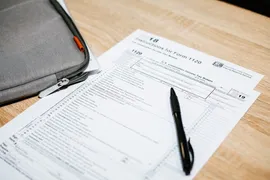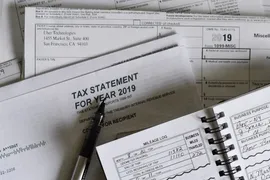If you’re struggling with tax debt, the IRS Fresh Start Program might be the lifeline you need. Designed to make it easier for taxpayers to pay back taxes and avoid harsh penalties, the program offers several options to help you get back on track. But is it the right solution for your situation? Let’s break down the key components of the Fresh Start Program and help you decide if it’s the right choice for you.
What Is the IRS Fresh Start Program?
The IRS Fresh Start Program is an initiative launched by the IRS to help taxpayers settle their debts more easily and avoid aggressive collection tactics. It includes a range of options that can provide relief, such as extended payment plans, penalty relief, and offers in compromise.
Key Components of the Fresh Start Program:
- Installment Agreements: Allows taxpayers to pay their tax debt over time through monthly payments.
- Offer in Compromise: Lets taxpayers settle their tax debt for less than the full amount owed.
- Penalty Abatement: Reduces or eliminates certain penalties, such as failure-to-file or failure-to-pay penalties.
1. Installment Agreements: Pay Over Time
One of the main features of the Fresh Start Program is the option to set up an installment agreement, which allows you to pay your tax debt over time in manageable monthly payments.
Eligibility Criteria:
- You owe less than $50,000 in combined tax, penalties, and interest.
- You can pay off the full amount in 72 months or less.
- All required tax returns have been filed.
Tip: Make sure you keep up with your installment payments and file all future tax returns on time to stay compliant with the agreement.
2. Offer in Compromise: Settle for Less
An Offer in Compromise (OIC) is a negotiation with the IRS to settle your tax debt for less than the full amount owed. It’s a great option if you’re unable to pay your full tax liability or if doing so would create a financial hardship.
How to Qualify:
- You must demonstrate that you can’t pay the full amount through your income, assets, and overall financial situation.
- The IRS considers your ability to pay, income, expenses, and asset equity when evaluating your offer.
Warning: Not all offers are accepted. Ensure your offer is realistic and backed by a detailed explanation of your financial situation.
3. Penalty Relief: Reduce or Eliminate Penalties
The Fresh Start Program also provides opportunities to reduce or eliminate certain penalties, which can make a significant difference in your overall debt.
Types of Penalties That Can Be Abated:
- Failure-to-File Penalty
- Failure-to-Pay Penalty
- Penalties related to estimated tax payments
Remember: Interest on unpaid taxes generally cannot be reduced or removed through this program, so it’s important to address your tax balance as soon as possible.
Is the Fresh Start Program Right for You?
The IRS Fresh Start Program offers multiple avenues for relief, but it’s not a one-size-fits-all solution. Whether it’s the right choice for you depends on your financial situation, the amount of your tax debt, and your ability to pay over time.
Consider This:
- If you can afford to pay off your debt within six years and meet the eligibility criteria, an installment agreement could be the right fit.
- If paying your full tax debt would cause financial hardship, an Offer in Compromise might be worth exploring.
- If penalties are the main issue, ask about penalty abatement to see if you qualify.
The IRS Fresh Start Program can be an effective way to regain control over your tax situation and reduce the burden of your tax debt. By understanding the options available, you can make an informed decision and take the first step toward financial relief. If you’re unsure which option is best for you, consider consulting with a tax professional who can guide you through the process and help you choose the path that best suits your needs.





Share